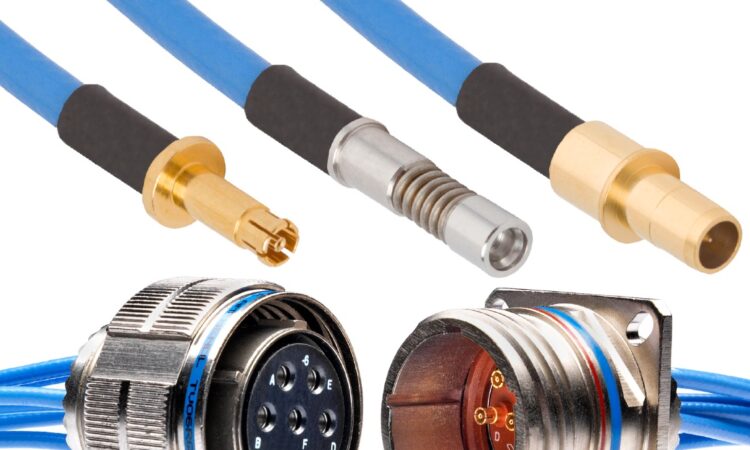
Electronics and technology require reliable and robust connections, especially in military and aerospace applications. Mil-grade connectors, short for military-grade connectors, are designed to meet these industries’ stringent requirements. These connectors are built to withstand extreme environmental conditions, provide secure and dependable connections, and ensure uninterrupted critical data and power. In this article, we will explore the six crucial types of connectors that play a vital role in defense and aerospace systems.
-
Circular connectors
Circular connectors are among the most common connectors. They feature a round shell with pins or sockets for electrical connections. These connectors are known for their durability, environmental sealing, and resistance to shock and vibration. The MIL-DTL-38999 series is a prime example of military-grade materials used in aerospace and defense applications. These connectors provide high-density contact arrangements, EMI/RFI shielding, and rugged construction, making them suitable for harsh environments and critical systems.
-
Rectangular connectors
These connectors are also known as square or round rack-and-panel connectors. They provide a versatile solution for high-density and multi-pin applications. The MIL-DTL-24308 series is a well-known example of rectangular connectors used in military and aerospace applications. These connectors offer a variety of contact arrangements, excellent EMI/RFI shielding, and robust construction, enabling reliable signal and power transmission in demanding environments.
-
D-Sub Connectors
Their D-shaped metal shell is widely used in commercial and military applications. They are known for their reliable performance, versatility, and ease of use. MIL-DTL-24308 D-Sub connectors are widely used in military systems, avionics, and communications equipment. These connectors feature threaded inserts for secure mating, high-density contact arrangements, and EMI/RFI shielding, making them well-suited to demanding applications requiring reliable data transmission.
-
Fiber Optic Connectors
Fiber-optic connectors play a crucial role in transmitting data through optical fibers. They provide high-speed, secure, and noise-immune connections for military, aerospace, and telecommunications applications. The MIL-DTL-38999 Fiber Optic (FO) Series is an example of a MIL-grade adapter with fiber optic capabilities. These connectors combine electrical and optical connections in one robust package. They provide excellent EMI/RFI shielding, environmental sealing, and high-density optical connectivity to ensure reliable data transmission under harsh conditions.
-
RF Coaxial Connectors
It is a radio-frequency device that connects antennas. They provide impedance-matched connections to ensure efficient high-frequency signal transmission. The MIL-PRF-39012 series is a well-known example of mil-grade RF coaxial connectors. These connectors provide excellent electrical performance, rugged construction, and mating cycle durability. They are designed to withstand high-frequency vibrations, shocks, and environmental conditions. This makes them ideal for military communications systems, radar equipment, and aerospace applications.
-
High-speed data connectors
With the increasing demand for efficient-speed data transmission in modern Mil-Grade systems, ultra-speed data connectors have become essential. These connectors are designed to handle large data rates, ensuring reliable and efficient data transfer. Examples of Mil-Grade fast-speed data connectors include the MIL-DTL-38999 series with fast-speed data inserts, the MIL-DTL-83526 series with differential pair inserts, and the MIL-DTL-83513 series with high-speed contacts. These connectors are used in applications where high-speed data communication is critical, such as military avionics, advanced weaponry, and data acquisition systems.
Conclusion
Mil-grade connectors are critical components in industries where reliable and robust connections are critical. By understanding the unique characteristics and examples of these connector types, engineers and professionals can make informed decisions when selecting the appropriate connectors. Visit Allied Electronics Corporation for more information.
